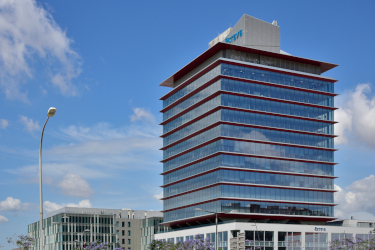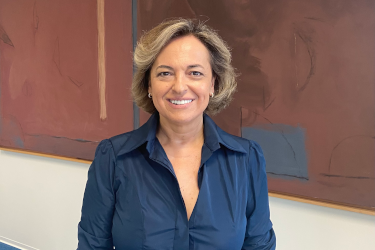26/06/2015
THE CREATION OF ARTIFICIAL CORNEAS NEEDS TO BE FOSTERED IN ORDER TO INCREASE THE NUMBER OF TRANSPLANTS
In Spain, one third of cornea donations had to be discarded.
Experts have brought attendants up to date on very frequent conditions such as dry eye and cataract and refractive surgery.
Experts have also analyzed the latest advances made in asymptomatic, very aggressive diseases such as glaucoma, AMD or diabetic retinopathy.
Artificial cornea transplants, eyedrops obtained from the patient's blood to treat dry eye conditions, femtosecond laser technology for cataract surgery, and techniques for the detection of conditions such as AMD were some of the major topics addressed at ESTEVE's ANNUAL REVIEW Meeting. For two days, Avila became the capital of ophthalmology by bringing together specialists from across Spain to debate about the latest advances presented this year in a dozen of world-renowned international congresses.
Creating artificial corneas likely to offer an alternative to human corneas -i.e. minimally invasive procedures without risk of rejection of transplanted tissues- poses one of the most ambitious challenges in ophthalmology in the medium term.
While still in the experimental phase, this opens up a range of possibilities. Indeed, corneas are one of the most sought after organs and are among the most frequent tissue transplants. According to the National Organization of Transplants (ONT), 5,144 corneas were obtained in 2013, of which 30% had to be discarded for transplant -27% due to donor-related problems and 73% due to processing-related problems. A total of 3,465 transplants were performed.
"The future lies in regenerative medicine", President of the Spanish Society of Ophthalmology (SEO) and scientific coordinator of ESTEVE's ANNUAL REVIEW Prof. Luis Fernández-Vega asserted. "Artificial corneas offer major advantages versus conventional transplants, artificial corneas will allow increasing the number of transplants and reducing waiting lists -we will no longer depend on donors".
Another objective of these investigations is artificial corneas in layers for lamellar (partial) transplants. "Surgery is less aggressive, less tissue is implanted and therefore the risk of rejection is reduced from 20% of total transplants to 2% of partial transplants. Also, the cornea of one donor may be used in two patients".
The round table on ocular surface and cornea also addressed keratoconus -a genetic disorder appearing as of the age of 20 where the normally round cornea becomes cone-shaped- and discussed the advances made in the application of the standard therapy for this condition: the insertion of intracorneal segments plastic ring segments- that flatten the corneal surface.
Finally, the treatment of dry eye conditions -mainly affecting women over the age of 50- is being improved with eyedrops obtained from the blood of the patient her/himself. "Enriched with platelets, they help lubricate and improve the healing process of eye injuries. While this treatment is not new, it is being used much more frequently". Another treatment, mainly for people who spend many hours in front of a screen and may have dry eye symptoms, is the frequent use of artificial tears.
REVIEW is a meeting organized and sponsored by ESTEVE, with the support of the major scientific societies of ophthalmology: the Spanish Society of Ophthalmology (SEO), the Spanish Society of Implant and Refractive Eye Surgery (SECOIR), the Spanish Society of Glaucoma (SEG), the Spanish Society of Ocular Surface and Cornea (GESOC), the Spanish Society of Retina and Vitreous (SERV), and the Spanish Society of Oculoplastics and Orbital Surgery (SECPOO).
Retina and glaucoma: a countdown timer
Another round table of this REVIEW focused on the retina and addressed its most frequent conditions and treatments with vitrectomy and laser techniques. Also, the importance of conducting periodic reviews to detect diseases that are asymptomatic in their first phases but then become very aggressive and may even lead to the loss of central vision, such as AMD or diabetic retinopathy, was emphasized. According to Prof. Fernández-Vega, "visiting one's ophthalmologist should be an acquired habit as of the age of 40".
In AMD (Age-related Macular Degeneration), which affects a part of the retina the macula experts have analyzed the currently available therapies. In exudative (wet) degeneration -the more serious of the two- "intravitreal injections of anti-angiogenic products are administered to prevent the proliferation of anomalous blood vessels in the macula, which results in the loss of vision; these injections allow preserving vision and even improving it". In dry degeneration 80% of the cases- research is being continued. While this condition does not cause absolute blindness, an effective treatment is still unavailable; also, it is at risk of evolving to wet AMD.
The roundtable on glaucoma addressed the major challenges involved in its approach and the currently available diagnostic methods, such as "devices to measure the fibers of the optic nerve, visual fields and tonometers (to measure eye pressure). Eyedrop-based or laser-based treatments and surgical procedures (trabeculectomy, non-penetrating deep sclerectomy, drain valves
) were also addressed".
Glaucoma -caused by increased intraocular pressure that damages the optic nerve- is yet "another clear example of a silent, very aggressive disease that causes no pain or discomfort. When the patient realizes he/she has the disease, the visual field is already very restricted, as though the patient was looking through a tube or a gun barrel", Prof. Fernández-Vega explained. Half of the one million people with glaucoma go undiagnosed.
A major breakthrough in eye surgery: multifocal lenses
Refractive surgery is a major aspect of ophthalmology. At the meeting, all treatments used to fight against vision defects (nearsightedness, farsightedness, astigmatism, and eyestrain) were analyzed, "including laser techniques and phakic lenses placed onto the crystalline lens".
These techniques allow treating up to 15 diopters in nearsightedness, 5 or 6 in farsightedness, and astigmatism. "While patients over the age of 50 are treated for eyestrain, what we do here is to remove the crystalline lens and place a multifocal lens". In this case, femtosecond laser has shown to "provide more safety to the patient, better results, and fewer complications".
New techniques in cataract surgery were also addressed. The femtosecond laser technique ensures a safer, more effective surgery and thus reduces the number of complications. In these cases, using the new multifocal (trifocal, extended focal, etc.) lenses removes the need for any kind of glasses after surgery.
Finally, the present edition of ESTEVE's REVIEW featured a roundtable on oculoplastics. "The ophthalmologist is increasingly involved in oculoplastics -the surgery that deals with the outer parts of the eye. While other specialists such as plastic or maxillofacial surgeons are also involved, the ophthalmologist must address this branch because it is part of his/her specialty". Oculoplastics includes a wide range of surgeries, such as drooping eyelid (ptosis), blepharoplasty (excess eyelid skin), abnormal eyelid position (entropion and ectropion), tumors, etc. "where the esthetic aspect also plays a role".
You can follow ESTEVE on Twitter at this link: twitter.com/esteve_news.



